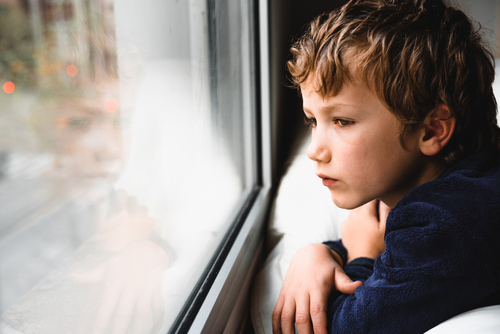The Psychiatric Times defines attachment as “a composite of behaviors in an infant, toddler, or young child that is designed to achieve physical and emotional closeness to a mother or preferred caregiver when the child seeks comfort, support, nurturance, or protection.” Secure attachments are integral to one’s social and emotional development. According to the American Academy of Child and Adolescent Psychiatry (AACAP), attachment disorders are defined as “psychiatric illnesses that can develop in young children who have problems in forming emotional attachments to others.” The Diagnostic and Statistical Manual of Mental Disorders, Fifth Edition (DSM-5) recognizes two distinct attachment disorders: disinhibited social engagement disorder (DSED) and reactive attachment disorder (RAD). Disinhibited social engagement disorder is characterized by “grossly abnormal social behavior, occurring in the context of a history of grossly inadequate childcare (e.g., severe neglect, institutional deprivation).” Reactive attachment disorder is a serious condition that is characterized when a young child, or infant, does not form a healthy, secure emotional bond to his or her primary caretakers. Attachment disorders are typically diagnosed in children between the ages of 9 months and 5 years old.
Causes
There is no exclusive reason why some children develop attachment disorders while others living in similar environments do not. While the exact cause remains unknown, research has found a link between “attachment disorders and significant neglect or deprivation, repeated changes in primary caretakers, or being reared in institutional settings.” Additional risk factors for attachment disorders could include:
- Caregivers with poor parenting skills
- Abuse (e.g., emotional, physical, sexual, etc.)
- Parental neglect
- Parents with psychiatric conditions
- Parental anger issues
- Prenatal exposure to drugs and/ or alcohol.
Depending on the child, some young people with an attachment disorder may experience minimal effects, while others may suffer traumatizing consequences. There are, however, many effective treatment options available in Southern California to help a young person overcome an attachment disorder.
Treatment
If left untreated, attachment disorders can impede a young person’s social and emotional development, subsequently hindering one’s quality of life. To secure the most effective treatment a child must be thoroughly evaluated by a qualified mental health professional to obtain an accurate diagnosis. The treatment plan for each child will be informed by his or her nuanced needs. A customized treatment plan developed by the providing clinician will ensure the unique needs of the child are properly addressed. Treatment plans could include a variety of psychotherapeutic modalities, such as attachment-based therapy, family therapy, cognitive behavioral therapy (CBT), expressive arts therapy, and dialectical behavior therapy (DBT). Specifically, due to the nature of the DBT format, it is among the most included types of therapy in treatment plans for children diagnosed with an attachment disorder. It offers both the ability to provide personalized therapeutic support through the individual therapy sessions, as well as peer support though the DBT skills group sessions. DBT will help a child learn mindfulness-based skills to gain control over his or her emotions. This allows for healthier relationships and improves interpersonal skills.
Disclaimer:
The information above is provided for the use of informational purposes only. The above content is not to be substituted for professional advice, diagnosis, or treatment, as in no way is it intended as an attempt to practice medicine, give specific medical advice, including, without limitation, advice concerning the topic of mental health. As such, please do not use any material provided above as a means to disregard professional advice or delay seeking treatment.


